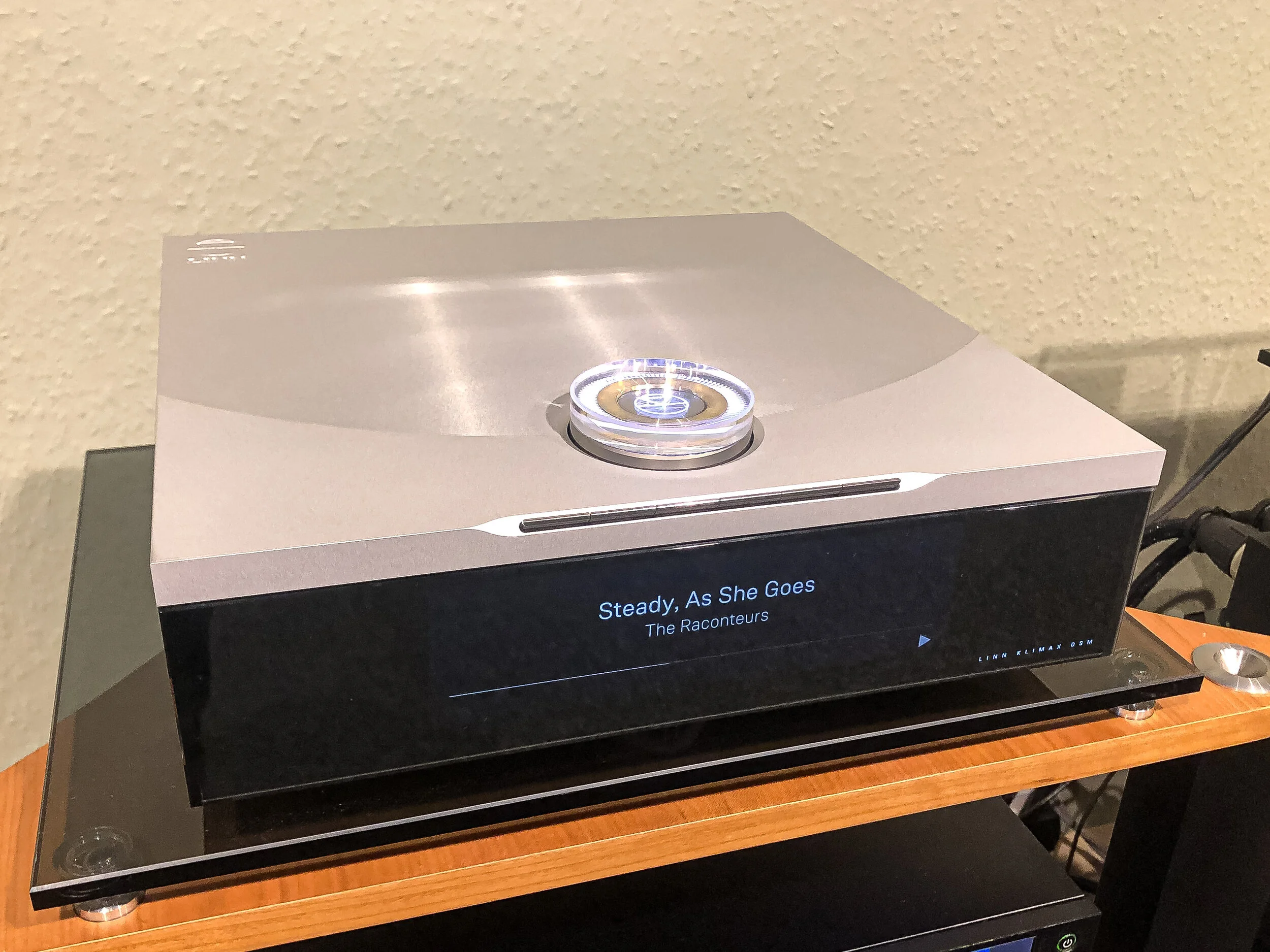Linn Vs Naim - The Great British Duel...
/A few weeks back, during those customary ‘end of July showers’, we had a customer brave the elements and walk through our door to enquire about upgrading his streamer. He asked us “If money was no object, should I buy the Klimax DSM, or the ND555?”… While we’ve heard and experienced both units individually, we’ve never sat down and compared them side by side in one sitting… so we thought we’d do just that, and now we’re going to tell you about it!
Here at Audio T Brighton, we consider ourselves to be incredibly lucky to have both a Klimax DSM and an ND555 available for demonstration. Those familiar with Naim and Linn will know the heritage of the two companies, and you’ll no doubt know how they differ in terms of design. To make the comparison as fair as possible we’ve put them up against each other in the exact same system. The only component being changed are the streamers themselves, so this should give us a clear picture of the differences between the two units.
The system* comprises of -
We’re using Naim Super Lumina Speaker cables. The ND555 is hooked up with a Naim Super Lumina interconnect, and the Klimax is using a Linn Silver interconnect which comes in the box with the Klimax).
*We’re fully aware that using a full Naim system is going to compliment a Naim streamer well, but that’s not to say you can’t plug anything else in and expect excellent results. The main thing to remember that the only part we’re changing is the streamer itself.
Two streamers, two looks…
Those familiar with Naim’s Classic series will recognise the box straight away from the olive green LED logo. The 500 series is incredibly similar in design, but the big difference is the smooth black anodised case, which Naim themselves refer to as the ‘500 series finish’, as opposed to the slightly rougher black powder coat on the Classics.
The Klimax DSM is a slightly different beast. The DSM design is fairly familiar, at least in recent years, as the Klimax is in a similar box to the Selekt DSM and the Majik DSM - although the Majik doesn’t have the volume knob on the top. However, the big difference here is the material. The Klimax DSM is machined out of one solid block of aluminium. It really is a piece of engineering art that happens to translate music to the highest of calibres.
So which one sounds better?
It’s safe to say that the world of Hi-Fi is truly a subjective one. One person’s ‘audio bliss’ could be another’s ‘nails on a chalkboard’, so it’s really impossible to give a definitive answer on which one is best. However, we’ll give you a descriptive picture of what they both offer.
We all know that there are a ton of “go-to” test songs out there. Well, we’ve used absolutely none of them for this comparison. “But why?” we hear you cry. To put it simply, we believe that in some circumstances that test songs can be redundant if you don’t listen to that song or artist. The best test songs for any system are whatever you’re going to be listening to regularly. Sure, test songs have their place in testing the response of a system, but to determine your own preferences, stick to your favourite albums and build the system around those.
For this purpose we’ve picked one song that is immaculately produced - Slow Burn by Kacey Musgraves - and one that is a bit more rough around the edges - Steady as She Goes by The Raconteurs. Both are award winning tracks, but they are almost at opposite ends of the spectrum in terms of engineering. This is a big part of why we’ve chosen these two tracks, as will be revealed! We’ll be chatting about both tracks individually.
First up, Slow Burn from Kacey Musgraves’ Golden Hour album -
Every track on this album is remarkably well produced, even winning Album of the Year at the 61st Grammy Awards. This particular track is a firm favourite though. It starts with some acoustic guitars, followed shortly by Kacey’s vocal. As soon as the guitar starts, you feel as though you’re in the room with the guitar. At this point the difference between the two units is fairly negligible, with the Naim having maybe a tad more of an edge on the vocal. The biggest difference so far is the soundstage, which is a touch more 3D on the Naim, but it isn’t until the bass and drums come in during the second verse that the difference becomes more obvious. The Linn is very clean and clear, and the high production of this track really starts to shine. It has a real “direct-from-desk” feel, as if you’re listening back to a newly finished track in the mastering studio. Each instrument has its space in the track, and the vocal remains clear throughout, even when the track does get louder. On the Naim, the bass and drums almost leap out of the speakers at you, with a real significant punchy feel. The separation between instruments is still there, but the guitars have an edge that isn’t quite so apparent on the Linn.
Next, Steady as She Goes from The Raconteurs debut album Broken Boy Soldiers -
Anyone familiar with Jack White and his style of ‘analog only’ engineering, will enjoy this album immensely. The collaboration with the rest of The Raconteurs means that things are kept a little in check, especially compared to some of the White Stripes records, but as a result we get some fantastic songs. This one starts with a punchy drum and bass intro, followed shortly by a very crunchy guitar. This is where the Naim really shone for the first time in the test, the edge in the upper mids produced by the ND555 grabs hold of that guitar and brings it right to the front. When switching to the Linn, the drum and bass intro doesn’t leap out of the speakers in the same way. You don’t feel that air move as much with each kick drum hit, and the crunchy guitar doesn’t have the edge, like on the Naim. However, when the vocal comes in, the story changes a bit. The Linn grabs that vocal and thrusts it right to the front of the mix, and even through the tape saturation of the vocal, it remains clear through the entire song, including the loud fuzzed out guitar chorus. The same chorus on the Naim remains punchier but the vocal isn’t as clear and up front. There does feel like a bit more of that 3D soundstage we mentioned earlier. It’s especially noticeable on this track, more so than on the earlier Kacey Musgraves track. You can really cling on to each instrument and vocal part separately, whereas with the Linn it feels as though the individual instruments have been fitted in and around the ever present vocal.
Our closing thoughts…
The most interesting part of this test was how much difference there was in the units with the Raconteurs track compared to the Kacey Musgraves. It has led us to conclude that if you’re looking for the most accurate representation of an album, and don’t want an overly punchy, particularly forward presentation, the Klimax DSM might be the streamer for you. If you want all the detail, but a bit more in your face, then the ND555 might be your preferred path.
Both the Naim ND555 and Linn Klimax DSM will be worthy streamers that will serve you admirably, but as always, listen to them both for yourself! It’s not a small investment for either unit, so you’ll definitely want to be sure you make the right choice.
Thanks for reading.
John, Paul, and Chris - Audio T Brighton
Please keep up to date with our social media pages, they’re updated regularly! Facebook & Instagram
Naim can be found at the following Audio-T stores
Linn can be found at the following Audio-T stores













